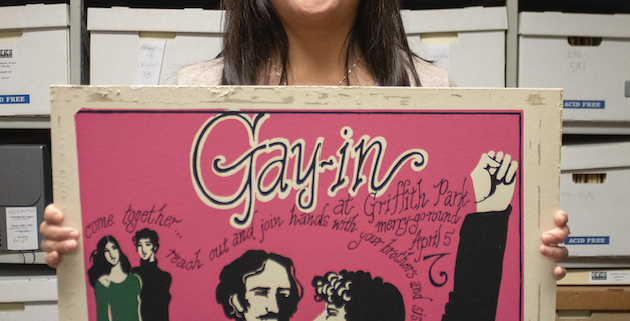USC Libraries to digitize LGBT archives

(Krystal Gallegos | Daily Trojan)
The ONE National Gay and Lesbian Archives at USC, the world’s largest collection of LGBTQ materials in the world, will complete its archive of historical documents by November. ONE Archives, which is located on West Adams Boulevard, is the oldest existing LGBTQ organization in the United States and houses over two million items, including texts and art from the 1900s.
Michael Gorse, assistant director of the LGBT Resource Center, said that digitizing the material will uphold the archives’ mission to make historical resources more accessible while promoting awareness of LGBTQ history. The project is currently in its final stages of digitization.
“I think often times throughout history, LGBT history even, in history of marginalized communities [there] has often been attempts to be erased or forgotten intentionally by folks who are anti-us,” Gorse said. “Before [digitizing] … students would still have to go in person to see it, so there’s a physical barrier … This allows increased access to these materials, expand our reach of education and the preservation of knowledge, and in case something ever happens to the physical documents … to have another format.”
The digitization of the collection, entitled “Out Front: 60 Years of LGBTQ Political Graphics at the ONE Archives,” began in 2017 after the ONE National Gay & Lesbian Archives and the USC Digital Library realized there was a large collection of posters and political memorabilia that has been mostly uncatalogued for many years.
Gorse said that as a result, most people haven’t been able to see the archives. The digitization project provides easier access to the graphics for documentaries, books, websites and historical accounts.
Emily Johnson, a sophomore majoring in political science and French, said she visited the archives during her first semester at USC as part of an outing during Welcome Week with a group of students led by writing lecturer Christina Belcher. She hopes that digitizing the archives will help more people see them and learn about their history.
“I don’t think a lot of people know that it exists or realize what’s there,” Johnson said. “It seems like there’s not a lot of outreach to students about the fact that it exists, so I think [digitizing] some of the content or at least having a web page for people to search … would be very helpful.”
If they can, Johnson said people should still visit the archives in person to see and learn about their history.
The collection is slated to include handmade signs from public demonstrations at the White House during the 1960s; picket signs from Act Up, a vocal group from the ‘80s that tried to raise awareness for AIDS; photographs from the Annual Reminders protests of 1965; and iconic posters from the Gay Liberation from the 1970s. All of these early protests focused on equality, inclusion and equal protections under the law.
The archives include a poster advertising a “Gay-In” at Griffith Park with the description “come together … reach out and join hands with your brothers and sisters.” Another sign that reads “Stop Police Brutality and Entrapment of Homosexuals!”
The digitization started when USC Libraries received a grant from the Council on Library and International Relations, an independent nonprofit that collaborates with educational institutions to enhance research and learning, called Digitizing Hidden Collections. Since 2015, the grant has given about $4 million to institutions known for their research, teaching and learning environments each year.
ONE Archives librarian Loni Shibuyama said the initiative was challenging because of organizational barriers that come with archiving old material.
“The challenges are that these materials are difficult to organize and difficult to handle. Because they were oversized items,” Shibuyama said. “You kind of have to go through and organize it, catalog it individually and also digitizing it is difficult too. I’m proud that it will soon be available to more and more people who can see the long history and diversity within the collection.”

